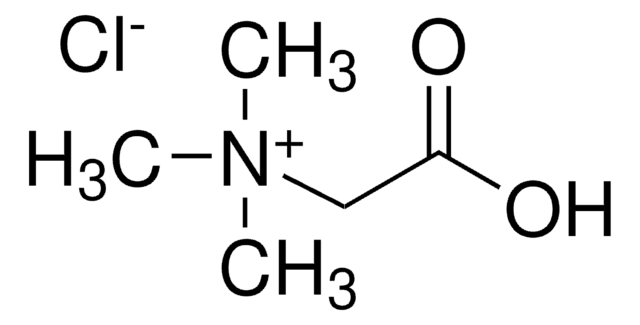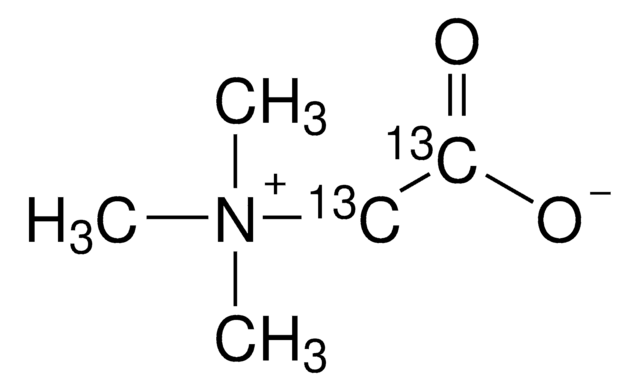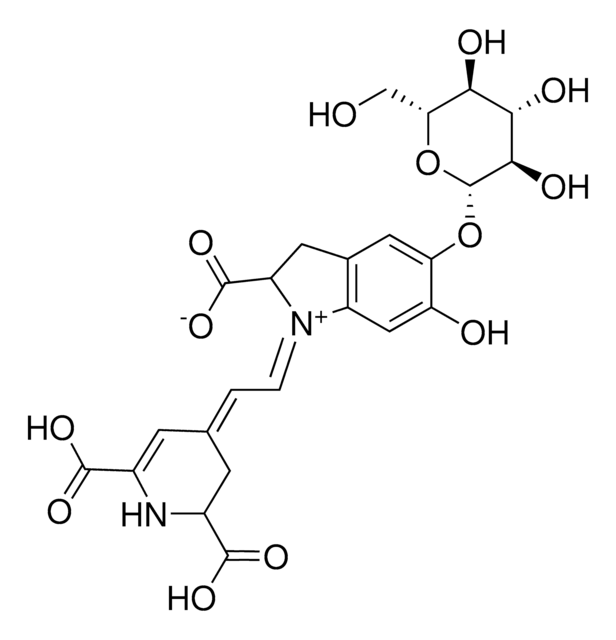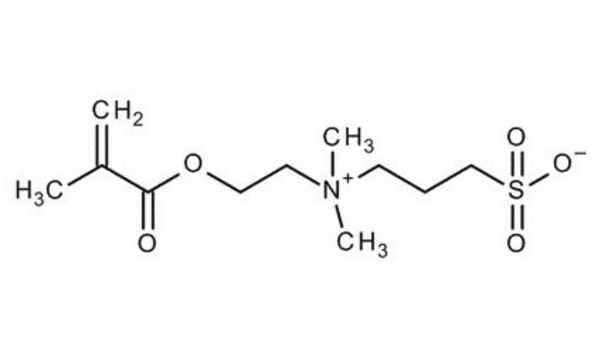B2629
Betaine
≥98% (perchloric acid titration)
Synonym(s):
(Carboxymethyl)trimethylammonium inner salt, Oxyneurine, Trimethylglycine
About This Item
Recommended Products
biological source
sugar beets
Quality Level
assay
≥98% (perchloric acid titration)
form
powder or crystals
mp
310 °C (dec.)
solubility
water: 50 mg/mL, clear, colorless to faintly yellow
storage temp.
2-8°C
SMILES string
C[N+](C)(C)CC([O-])=O
InChI
1S/C5H11NO2/c1-6(2,3)4-5(7)8/h4H2,1-3H3
InChI key
KWIUHFFTVRNATP-UHFFFAOYSA-N
Looking for similar products? Visit Product Comparison Guide
General description
Application
Biochem/physiol Actions
Storage Class
11 - Combustible Solids
wgk_germany
WGK 1
flash_point_f
Not applicable
flash_point_c
Not applicable
ppe
Eyeshields, Gloves, type N95 (US)
Choose from one of the most recent versions:
Already Own This Product?
Find documentation for the products that you have recently purchased in the Document Library.
Customers Also Viewed
Our team of scientists has experience in all areas of research including Life Science, Material Science, Chemical Synthesis, Chromatography, Analytical and many others.
Contact Technical Service







